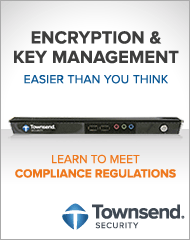 PCI DSS. HIPAA/HITECH. State Privacy Laws. What do all these compliance regulations have in common? They require you to be collecting and monitoring your system logs. To give an example of how logging works, if someone tries to sign into an IBM i (or any server) and for whatever reason and the username or password is invalid, that event is logged in the system log. Why is this important? Because if you were to look at this system log in real-time and notice several invalid username and password events, you would say “Hey, our system is being attacked. We need to take action on this now.”
PCI DSS. HIPAA/HITECH. State Privacy Laws. What do all these compliance regulations have in common? They require you to be collecting and monitoring your system logs. To give an example of how logging works, if someone tries to sign into an IBM i (or any server) and for whatever reason and the username or password is invalid, that event is logged in the system log. Why is this important? Because if you were to look at this system log in real-time and notice several invalid username and password events, you would say “Hey, our system is being attacked. We need to take action on this now.”
Unfortunately, compliance regulations sometimes aren’t enough of a reason for a company to do everything that they should to protect your sensitive data. Many times there just isn’t a budget for additional technology or when management does spend money, they want to see a return on their investment (ROI). Luckily, there is a clear ROI when you invest in a system logging solution. Here are three things to help you make your case to management on why you need to purchase a system logging solution:
1) Save Time
System logging can make life easier for the IT department, giving them back time to work on other projects. Recently we had a customer purchase Alliance LogAgent, our IBM i (AS/400) system logging solution, and was sending system logs to his SIEM console within an hour of getting started.
2) Save Money
Everyone wants to save money, right? Sure, it might be possible to write your own logging application (not an easy feat on the IBM i), but why waste a developers valuable time? Alliance LogAgent is a low-cost solution that is trusted by companies worldwide.
3) Solve Business Problems
System logging will solve business problems. An audit can be a problem and we see companies getting dinged on logging all the time. Not knowing who is logged into your system is a problem that auditors will not overlook. The sooner you can get through an audit, the sooner you can be back to focusing on business.
Listen to our podcast “System Logging on the IBM i” for more information on logging, how it can help you meet compliance requirements, what to look for in a logging solution, and how Townsend Security can help you transmit the logs from your IBM i to any SIEM console.





 About 5 years ago I set myself the task of reading every state's data privacy law. There were 44 states that had passed some form of data privacy law, and several were in the process of updating them. I also created a spreadsheet and cross-referenced information what each state considered Personally Identifiable Information (PII) that needed to be protected. The State of California had led the way with SB-1386, and many states followed.
About 5 years ago I set myself the task of reading every state's data privacy law. There were 44 states that had passed some form of data privacy law, and several were in the process of updating them. I also created a spreadsheet and cross-referenced information what each state considered Personally Identifiable Information (PII) that needed to be protected. The State of California had led the way with SB-1386, and many states followed. 
 Cyber hackers have repeatedly victimized US businesses, resulting in a widespread movement to increase cyber security in many US organizations.
Cyber hackers have repeatedly victimized US businesses, resulting in a widespread movement to increase cyber security in many US organizations.


 We have recently seen the medical community step up their level of concern regarding protecting Protected Health Information (PHI). Aside from just “doing the right thing” there are business reasons attached. Data breaches are now a regular occurrence and have serious dollars connected to them. Did you know that data breaches in the healthcare industry have increased 32% in the past year and cost an estimated $6.5 billion annually? Additionally, breaches aren’t just a result of hackers. Forty-one percent of healthcare executives attribute data breaches to employee mistakes. Luckily, there is a safe harbor for breach notification – proper encryption and key management.
We have recently seen the medical community step up their level of concern regarding protecting Protected Health Information (PHI). Aside from just “doing the right thing” there are business reasons attached. Data breaches are now a regular occurrence and have serious dollars connected to them. Did you know that data breaches in the healthcare industry have increased 32% in the past year and cost an estimated $6.5 billion annually? Additionally, breaches aren’t just a result of hackers. Forty-one percent of healthcare executives attribute data breaches to employee mistakes. Luckily, there is a safe harbor for breach notification – proper encryption and key management.
 Townsend Security recently hosted a webinar titled “
Townsend Security recently hosted a webinar titled “ So you've decided to purchase an encryption key management HSM to help you pass a QSA audit and meet PCI DSS compliance. Unfortunately just showing the auditor your paid receipt and key manager is not enough to satisfy requirements. You have to actually be using them in a production environment. Fortunately this is a fairly simple process to get started with Alliance Key Manager, our encryption key management HSM.
So you've decided to purchase an encryption key management HSM to help you pass a QSA audit and meet PCI DSS compliance. Unfortunately just showing the auditor your paid receipt and key manager is not enough to satisfy requirements. You have to actually be using them in a production environment. Fortunately this is a fairly simple process to get started with Alliance Key Manager, our encryption key management HSM.